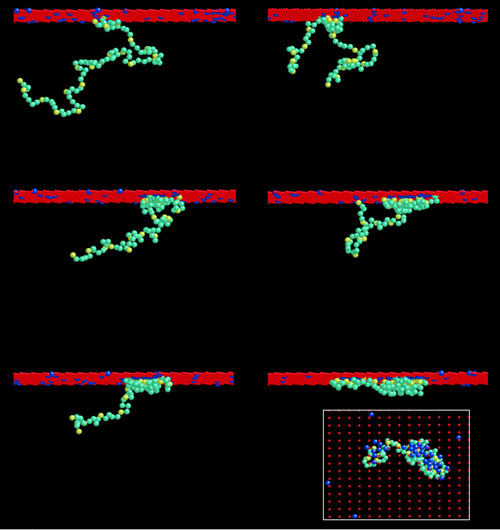
 |
A polymer binds to a surface in a computer simulation. The blue sites on the surface stick loosely to the yellow subunits of the polymer. The polymer can bind very tightly because of the combined attraction between multiple polymer sites and the surface. Notice that binding is not a discrete process: various parts of the polymer attach and detach before forming a tight bond. The time series goes from right to left, top to bottom. The inset, a top view of the last frame, shows that the polymer has clustered the blue sites on the surface. |
|
View the:
|
Boas, Franz Edward. (1999) "Polyvalent Inhibitors of Pseudomonas aeruginosa Adhesion." Senior honors thesis, Harvard University.
Thesis advisor: Prof. George Whitesides, Dept of Chemistry and Chemical Biology, Harvard.
Abstract |